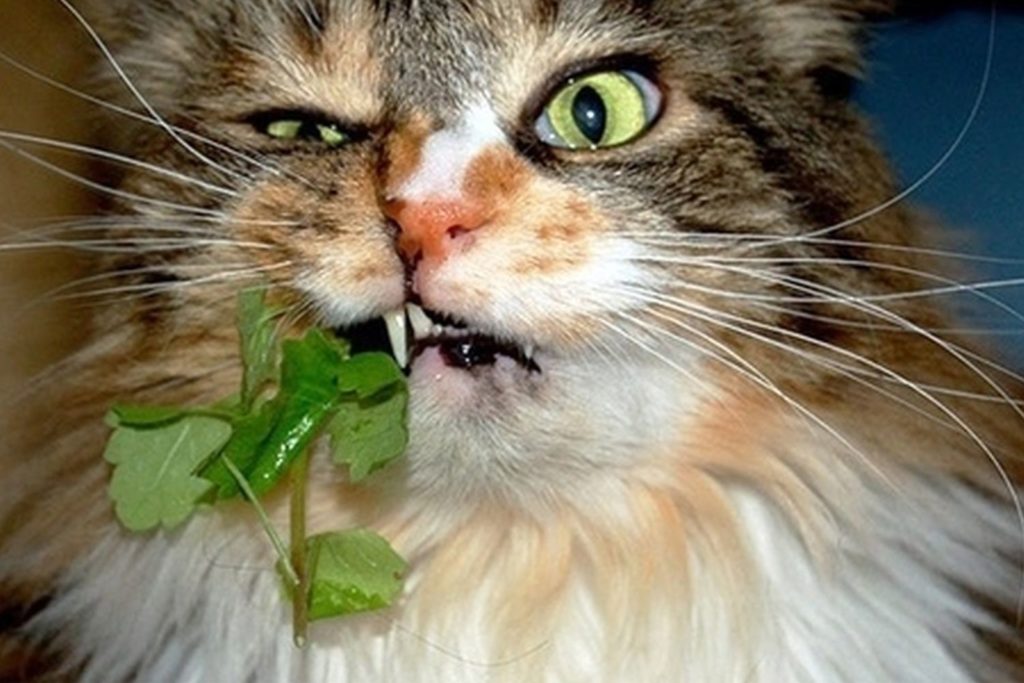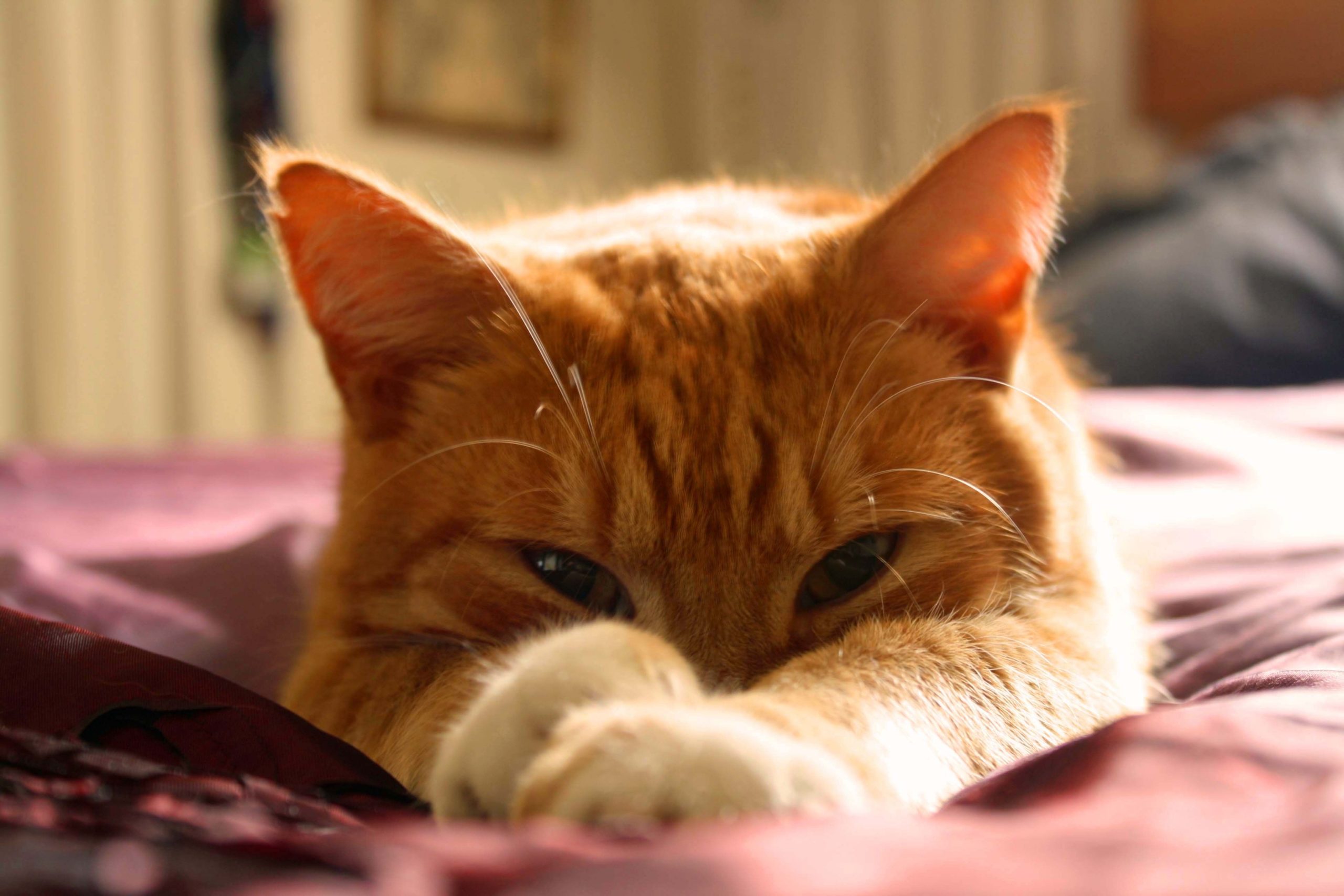Catnip: This mint-scented perennial drives most cats crazy. We don’t know why it doesn’t affect all cats equally, but the truth is that young cats seem to escape its influence.
In Roman times, it was already used for human consumption to combat a wide range of ailments. Nowadays, catnip is mainly reserved for felines, but some humans use it to relieve stomach upsets, reduce fever or put an end to respiratory ailments, among other uses.
In this article, we’ll look at how it modulates feline behavior.
La Nepeta Cataria
Catnip, from its scientific name Nepeta Cataria, is a plant with serrated leaves that grows in Europe, some Asian countries and North Africa. It usually reaches 20 to 60 centimeters in height, and is characterized by its intense minty aroma.
In fact, it belongs to the same botanical family as mint and spearmint. They are all Lamiaceae. In spring, it develops a spike-shaped flower stalk, known as an inflorescence.
Why do kittens love catnip?
It is estimated that 80% of cats who smell this plant are seduced by it, and are easily suggestible during the 10 minutes that its “narcotic” effect lasts. Interestingly, it takes 30 minutes after the first effects for your cat to get drunk again.
A high percentage of kittens smell it, pick it up with their front paws to rub their heads on it and then lick and nibble it. This ritual can last from 5 to 15 minutes. Some cats are relaxed, while others are hyperactive after consuming it. In the smallest of cases, it provokes aggressive behavior.

The explanation for this behavior is thought to lie in the nepetalactone molecule, which penetrates the animal’s nostrils and activates the areas of the central nervous system that regulate its sexual behavior. In fact, some cats make a sound similar to that of a cat in heat when they take it.
What’s the point of giving your tomcat catnip?
Catnip is often used by cats to relieve stomach upsets. This can be caused by massive ingestion of hairballs after grooming, or by discomfort. They may also feel the need to induce vomiting on an empty stomach, resulting in uncomfortable heartburn. Catnip can also be useful if your cat has ingested a poisonous plant or flower.
If this catnip-chewing behavior is a one-off event that happens once every 2 or 3 months, don’t worry, it’s natural. However, if your pet uses it every 15 days or every month, you should consult your veterinarian, as it could be a case of chronic gastritis requiring appropriate treatment.
Why doesn’t catnip affect all cats in the same way?
There is some confusion around this point. Some specialists say it depends on breed, with common European cats being the most sensitive to catnip, but this has not been proven.
What they do agree on is that males are more likely to fall into the trap, as its chemical composition is similar to that of cat urine.
As you can see, it’s quite mysterious how catnip affects a high percentage of kittens.
Catnip uses
Taking advantage of its powerful ability to influence feline behavior, there are countless toys and sprays containing nebeda. You’ll find toys that are great for encouraging physical activity in even the laziest felines. Don’t hesitate to use this type of toy to prevent overweight or obesity.
If your cat doesn’t touch his toys anymore, you can try spraying them with catnip spray and you’ll be surprised at his reaction. You can also apply it to the scraper to encourage him to sharpen his nails on it rather than on your furniture.
In addition to physical stimulation, this herb exerts what ethologists call “environmental enrichment”, alluding to its power of cognitive stimulation, which is essential for preserving the animal’s psychological health. This will help lift the spirits of a listless or depressed cat.
Does catnip have any contraindications?

Catnip is absolutely harmless and non-addictive, so you can have it around the house without worrying about your cat getting sick or feeling unwell. Of course, you have to be careful how often he ingests it.
The only risk is that of open spaces. If your cat has taken catnip and you have open windows or a terrace, you need to control access, as it could be unaware of its actions and hurt itself. Similarly, if you notice that after taking it, it is aggressive, you should remove the plant.
Where to buycatnip?
Our advice is always to go to specialist stores. You can buy it from seed or directly from the pot. Depending on your choice, their care will vary.
Catnip seeds
You should always sow them in spring. The day before sowing, leave them to soak for 24 hours to hydrate. The next day, take a 10.5-centimeter-diameter pot and universal potting soil. Water until the soil is very moist.
Introduce no more than 2 seeds per pot and cover with a thin layer of substrate. Water again, this time with a sprayer, and make sure the pot gets the light it needs. Ideally, it should be kept outdoors in part shade, but if it must be indoors, it should be in a bright, draught-free room.
If you keep the substrate moist at all times, after 14-20 days it will germinate and you will need to transplant it into a larger pot.






